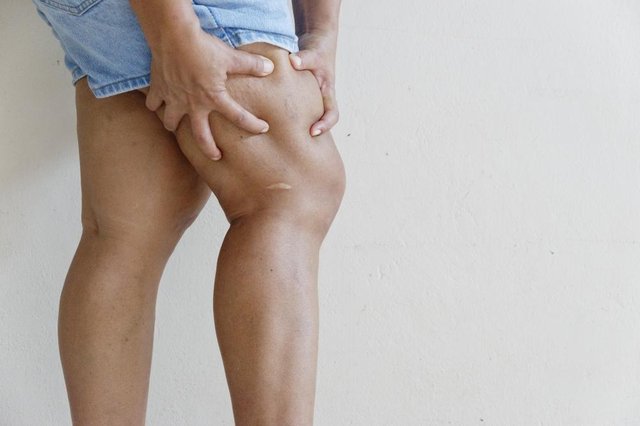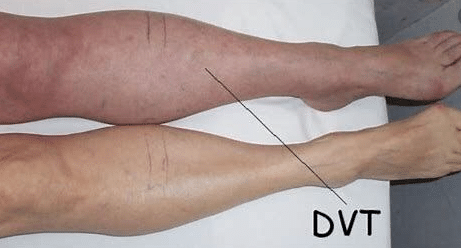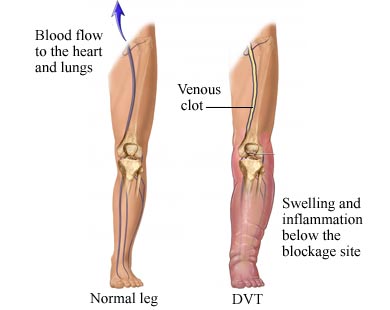DVT Deep Vein Thrombosis specialists Doctor in Delhi

DVT
Deep Vein thrombosis specialists Doctor in Delhi, Manipal Hospital Dwarka. DVT also called (venous thrombosis) is a condition where a blood clot due to injured veins or any other reason develops in a vein deep in the body. This may lead to partially or fully block blood inflow to heart. The most common site of DVT is Lower Leg or pelvis, but may occur in the arm, brain, bowel, or liver
A deep veins thrombosis may lead to threat of pulmonary embolism (PE) if not treated in time. In this the clot breaks and transit to Lungs from inside the vein. This causes a serious illness and is potentially life-threatening may lead to death in some cases.
Symptoms for DVT (Deep Vein thrombosis)
A DVT most commonly develops in one leg (mainly Calf) or one arm. There is usually no symptoms in most of the patients .The most typical symptoms are:
- Swelling of the leg or arm (sometimes this happens suddenly)
- Pain or tenderness in the leg (may only happen when standing or walking)
- Temperature changes in leg swollen area means warmer than usual on touch
- Skin colour changes to red or discolored
- The veins near the skin’s surface may be larger than normal


Many people don't even know that they are suffering from DVT (Deep Vein thrombosis) until clot moves from their leg or arm and travel to their lung and causes conditions like :
- Shortness of Breath
- Pain in the chest
- Pulse rate high
- Feeling Dizzy or may faint suddenly
- Blood in cough
Causes of DVT (Deep Vein thrombosis)
Blood normally flows quickly through veins and does not become solid (clot). Leg movement help the blood flow in leg veins because muscle action squeezes the veins.
The following conditions can increase your risk of a DVT:
-
Long periods of inactivity that decrease blood flow, such as:
- Sitting for a long period of time on trips in a car, truck, bus, train or airplane
- Immobility after surgery or a serious injury
- Limited blood flow in a deep vein, due to injury, surgery, or immobilization is also one of the most common cause of DVT
- An inherited condition that increases your risk of blood clots
- Cancer Medicines and some of its treatments (chemotherapy)
- Pregnancy and the first 6 weeks after giving birth
- Being over age 50 (although a DVT can affect people of any age)
- Being overweight
- Taking birth control pills or hormone therapy
- Having a central venous catheter or pacemaker

Diagnosis
Sometimes it is difficult for a doctor to be sure of the diagnosis from just your symptoms, as there are other causes of a painful and swollen calf. As they may be similar to Muscle strain or skin infections.
If you have a suspected DVT, you will normally be advised to have tests done urgently to confirm or rule out the diagnosis. Two commonly used tests are:
D Dimer :To help detect blood clots . If the value is high there may be chances of DVT but not the sure shot test as higher values may be of many different diseases.
Doppler Ultrasound :
used to show blood flow in the leg veins and any blockage to blood flow. Ultrasound is useful because it is an easy, non-invasive test.
Many other tests are also to be done for confirmation
Ct Scan
Mri
Treatment
Main Goal for treatment of DVT is:
- stop the growth of a clot
- prevention of a clot from becoming an embolism and travel into the lung
- reduce the risk for reversible DVT after treatment
- reduce the risk of other complications
A doctor may recommend several methods to manage DVT, as follows:
Medicine Anticoagulants or Blood Thinners
Medicine Anticoagulants or Blood Thinners are the most common medicines used to for treatment of DVT . These drugs used to reduce the ability of Blood to clot and dissolve the alredy present clots and prevent embolism. Usually these medications are to be taken for 6 months but in case of recurrent DVT patients may used to take Life time.
ThrombolyticsThrombolytics In some cases usually severe DVT where immediate attention is required, your doctor may recommend using thrombolytic Medicines. These medications are injected via a catheter directly into the blood clot and are used only when there is an extremely high risk for pulmonary embolism.
Compression StokingsCompression Stokings A special type of socks which compresses the ankle and loosen up at calf /Knee . This helps in reduction of Pooling of Blood and prevent clots also it reduces Pain , Swelling and give some relief to patient .
Surgical InterventionSurgical Intervention If anticoagulants and other available not give result or may be due to some health condition it is not advisable to give anticoagulants then the other option is Surgical Treatments as follows –
Inferior Vena Cava FilterInferior Vena Cava Filter A small device call Inferior Vena Cava Filter is inserted to the main Vein Vena Cava ,the largest vein leading to Heart. A cone shaped device stops /filter the big clots reaching to heart or lungs to prevent the Pulmonary embolism while allowing blood to free flow .
Mechanical thrombectomyMechanical thrombectomy To treat DVT or PE a relatively new technique used by surgeons these days to treat Blood Clots.Recent studes shows that it is safe and effecting treatment with less risk of recurrence In this technique a catheter is used and inserted to clot location and a Clot removing device (May be aspiration Catheter ,a retrival stent or pump) is directed to remove the clot and again reestablish the blood flow.
